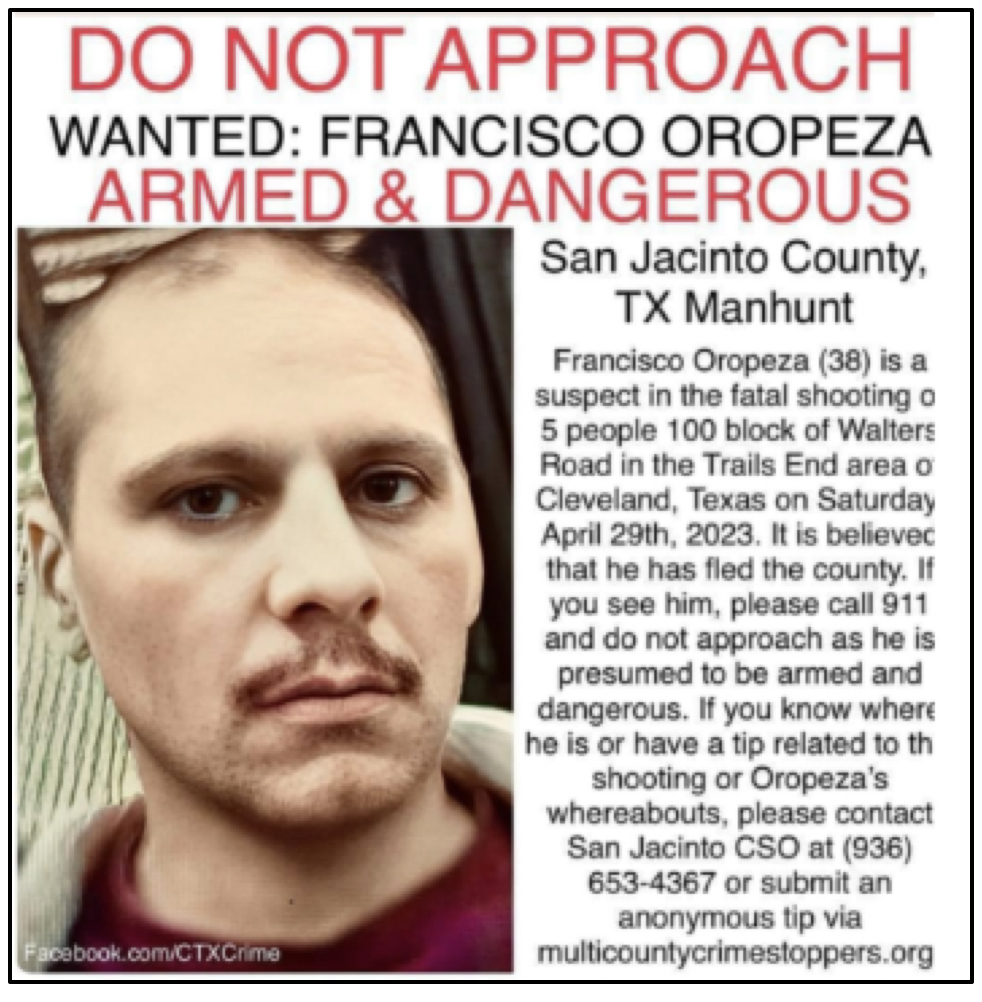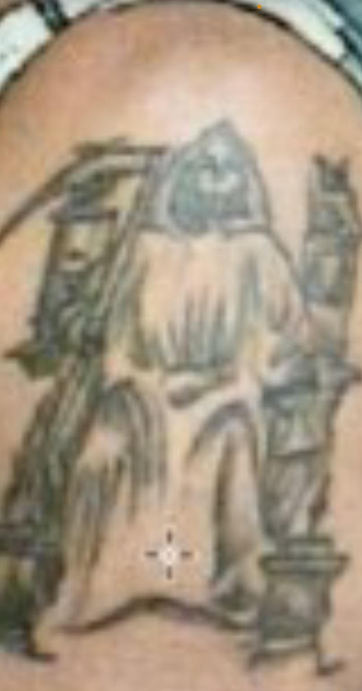
AUSTIN, Texas — The repeatedly deported Mexican fugitive sought in an wide-ranging manhunt for massacring a family of five Hondurans next door, in the nation’s largest illegal immigrant community, maintained an elaborate “Santa Muerte death cult” shrine in the master bedroom whose candles were still burning Monday, according to a law enforcement officer who saw it.
The shrine of multiple statues reflecting various patron saints, one of them four feet tall and a half dozen smaller ones was replete with a stack of $2 bills, freshly cut flowers, and tinfoil filled with what appeared to be a drug as offerings to ostensibly protect Francisco Oropesa (sometimes spelled Oropeza), the suspected murderer. Two tall candles depicting various muerte cult “saints” were still burning two days after the killings, the law enforcement officer said. The shrine was arrayed in the bedroom around a double-stack glass shelving piece, the source said.
Oropesa is believed to have gunned down five of his Honduran neighbors in San Jacinto County, Texas, including a mother and her 8-year-old child, when she complained that his firing of an AR-15 rifle in his back yard after 11 p.m. was keeping her baby awake.
Santa Muerte adherents throughout Mexico, where the cult blossomed among drug trafficking cartel syndicates in recent decades and also the non-cartel criminal underworld, believe prayers and offerings to Santa Muerte (the Saint of Death) as well as other saints, idols, and figurines, protect drug loads and stave off arrest for their criminality. Some have taken on the symbols of the cult for social and cultural reasons. One of Oropesa’s tattoos features the iconic Santa Muerte figure, a skeletal figure draped in robes and holding a sickle.

While the implications of a serious shrine in a private bedroom of Oropesa’s Cleveland, Texas, area home should not be construed as definitive proof of his criminality, experts say its presence there and in a tattoo on his arm does strongly indicate that Oropesa was involved in at least semi-organized criminal activity and that he would have access to an underworld network that could hide and move him into Mexico.
The bedroom shrine and tattoo therefore may figure in an urgent manhunt for him in which 250 law enforcement officers, including the FBI, trying to capture him consider him armed, dangerous, and fearing he may feel he has nothing to lose while moving through public spaces.
“Anyone who has a Santa Muerta shrine is linked to the criminal underworld,” said retired Texas Department of Public Safety Captain Jaeson Jones, who worked for years on intelligence to counter Mexico’s drug cartels. “It doesn’t necessarily mean they’re connected to the cartels, even though the cartels all over Mexico follow the cult. But you can at least link him to the criminal underground through Santa Muerta.”
The Catholic Church and Mexican government have officially rejected the cult as having no religious basis.
The fugitive’s faith also underscores the extent to which a massive illegal immigrant settlement has in recent years sprawled over Liberty and San Jacinto counties where the massacre happened — the largest “colonia” in the United States, of at least 50,000, as detailed in a chapter about it in my book Overrun: How Joe Biden Unleashed the Greatest Border Crisis in U.S. History. (An excerpt from that chapter is here.)
The book describes this area as a safe zone where U.S. Immigration and Customs Enforcement agents will not tread and an otherwise thinly patrolled community where a previously unknown diversity of extreme violent crime has developed, including cartel drug and human smuggling operations, law enforcement in the area have said. No evidence has surfaced that Oropesa worked with cartel organizations, though his interest in Santa Muerta ideology may indicate connections, Jones said.
